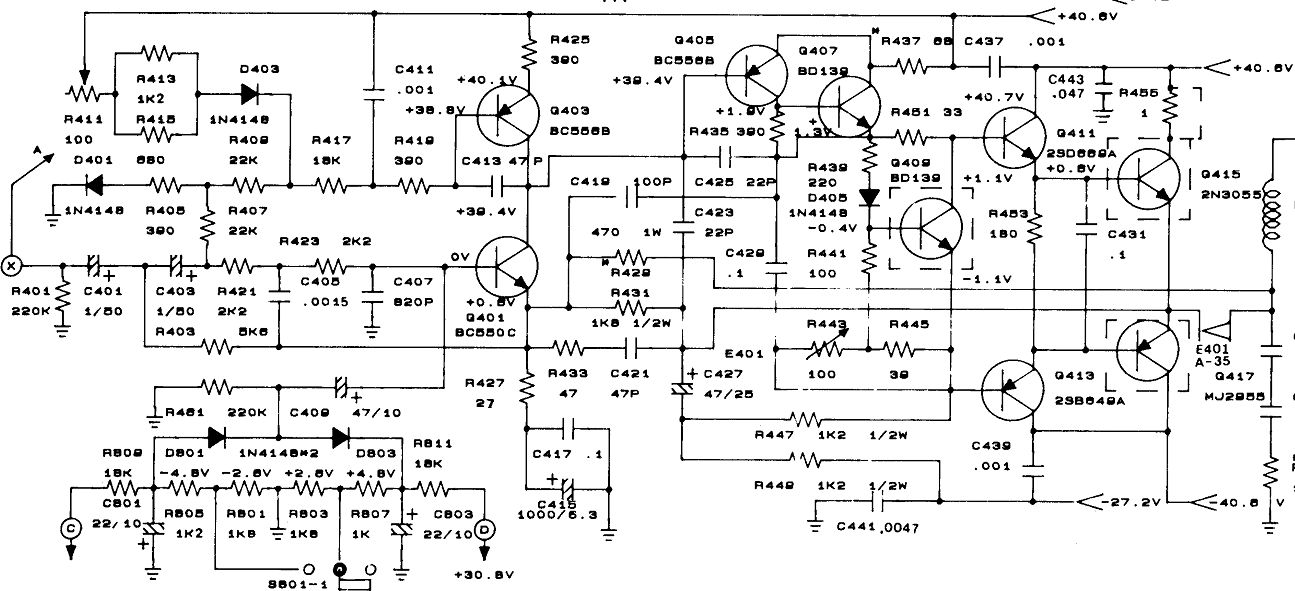Hello all,
I'm in the process of repairing a NAD 3220PE which is a 3020E with the added "power envelope" power supply.
For now I know the drivers on 1 channel are shot and the power transistors measure (surprisingly) ok.
I'll be replacing the drivers with:
BD237 BCE 100V 2A 25W 3MHz hfe 40-
BD238 BCE 100V 2A 25W 3MHz hfe 40-
or
2SA1837 BCE 230V 1A 20W 70MHz hfe 100-320
2SC4793 BCE 230V 1A 20W 100MHz hfe 100-320
Originals seem kinda difficult to come by and above are cheap enough to buy more than needed and match them.
My question is about the power transistors: because they are 30 years old I intend to replace them.
In other venues people recommend replacing the original types with modern ones and add emitter resistors and basestoppers for added reliability.
I have pairs of MJ15024/25 which would seem ok for the job but the originals are (of course) also readily available.
Which would be the preferred course of action?
Thanks in advance,
Johan
I'm in the process of repairing a NAD 3220PE which is a 3020E with the added "power envelope" power supply.
For now I know the drivers on 1 channel are shot and the power transistors measure (surprisingly) ok.
I'll be replacing the drivers with:
BD237 BCE 100V 2A 25W 3MHz hfe 40-
BD238 BCE 100V 2A 25W 3MHz hfe 40-
or
2SA1837 BCE 230V 1A 20W 70MHz hfe 100-320
2SC4793 BCE 230V 1A 20W 100MHz hfe 100-320
Originals seem kinda difficult to come by and above are cheap enough to buy more than needed and match them.
My question is about the power transistors: because they are 30 years old I intend to replace them.
In other venues people recommend replacing the original types with modern ones and add emitter resistors and basestoppers for added reliability.
I have pairs of MJ15024/25 which would seem ok for the job but the originals are (of course) also readily available.
Which would be the preferred course of action?
Thanks in advance,
Johan


